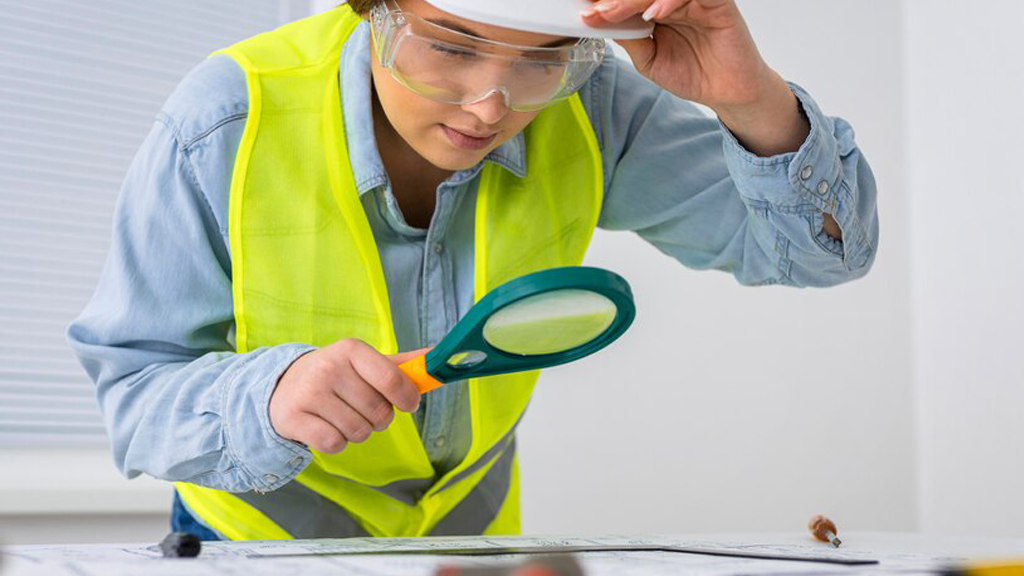Quality Control and Safety Inspections’ Importance
Ensuring safety and maintaining quality are crucial in any industry, particularly in construction, manufacturing, healthcare, and transportation. Quality assurance (QA) and safety inspections are essential for preventing accidents, ensuring compliance, and providing high-quality goods and services.
- Ensuring Compliance with Regulations
Safety inspections help organizations comply with industry regulations, legal standards, and government guidelines. Regulatory bodies such as OSHA (Occupational Safety and Health Administration) and ISO (International Organization for Standardization) set requirements to ensure workplace safety and product reliability. There are legal repercussions, fines, and reputational harm that can result from noncompliance.
- Reducing Workplace Injuries and Accidents
Regular safety inspections help identify hazards, faulty equipment, and unsafe practices before they lead to accidents. This proactive approach minimizes workplace injuries, protects employees, and enhances productivity by reducing downtime caused by incidents.
- Improving Product and Service Quality
Products and services are guaranteed to meet specified standards through quality assurance. The likelihood of recalls, customer complaints, and financial losses are all reduced when QA processes are implemented. Consistently high-quality products build trust and improve customer satisfaction.
- Enhancing Operational Efficiency
A well-structured safety and quality assurance program streamlines operations by eliminating inefficiencies. Identifying and addressing potential risks early prevents costly rework, improves workflow, and enhances overall performance.
- Protecting Reputation and Brand Integrity
Companies that prioritize safety and quality assurance demonstrate their commitment to excellence. A strong reputation for safety and quality builds customer trust, attracts business partnerships, and strengthens brand credibility.
- Cost Savings in the Long Run
While safety inspections and QA require initial investment, they save money by preventing workplace accidents, defective products, and legal penalties. Avoiding lawsuits, compensation claims, and costly repairs leads to significant financial benefits.
- Employee Morale and Productivity
A safe working environment and quality-driven culture boost employee confidence and job satisfaction. Workers are more productive when they feel secure, knowing that their employer prioritizes their well-being.
How to Cope with Safety Inspections in Construction Projects?
Safety inspections in construction projects are essential for compliance, accident prevention, and maintaining a safe work environment. However, they can be challenging due to strict regulations, dynamic site conditions, and tight schedules. Here’s how to effectively manage and cope with safety inspections:
- Make Advance Plans
- Learn about OSHA, local building codes, and safety rules that pertain to your project.
- Perform safety audits prior to official inspections to identify and resolve potential problems.
- Ensure that all permits, safety plans, and paperwork are current and easily accessible.
- Implement a Robust Safety Program
- Develop a site-specific safety plan covering all aspects of hazard identification, PPE usage, and emergency protocols.
- Designate a Safety Officer or Manager to ensure regular site monitoring and ensure compliance.
- Conduct daily toolbox talks to reinforce safety guidelines and keep workers informed.
- Maintain Proper Documentation
- Keep accurate records of safety training, equipment inspections, incident reports, and hazard assessments.
- Ensure that Material Safety Data Sheets (MSDS), permits, and certifications are readily available.
- Organize all documents so that they can be presented to inspectors as soon as they are asked.
- Conduct Regular Internal Inspections
- Schedule frequent self-inspections to detect and address hazards before an official inspection.
- Use checklists to ensure nothing is overlooked, covering areas like scaffolding, fall protection, electrical safety, and fire hazards.
- Engage supervisors and workers in inspections to foster a proactive safety culture.
- Train Workers on Safety Compliance
- Provide regular safety training and refreshers on workplace hazards and best practices.
- Ensure that workers know how to properly use Personal Protective Equipment (PPE) and follow safety protocols.
- Encourage workers to report unsafe conditions without fear of repercussions.
- Address Issues Immediately
- If an inspector identifies a violation, take immediate corrective actions.
- Make sure that the corrective actions taken are properly documented in the log you keep.
- If a fine or penalty is issued, work on rectifying the issue promptly to avoid project delays.
- Foster a Safety-First Culture
- Leadership should actively promote safety as a priority, not just a compliance requirement.
- Workers who consistently adhere to safety procedures should be recognized and rewarded.
- Encourage open communication between employees and management regarding safety concerns.
- Stay Updated on Regulations
- Safety standards and regulations evolve, so stay informed about new laws, amendments, and best practices.
- Attend industry workshops, subscribe to safety newsletters, and collaborate with safety consultants when necessary.



